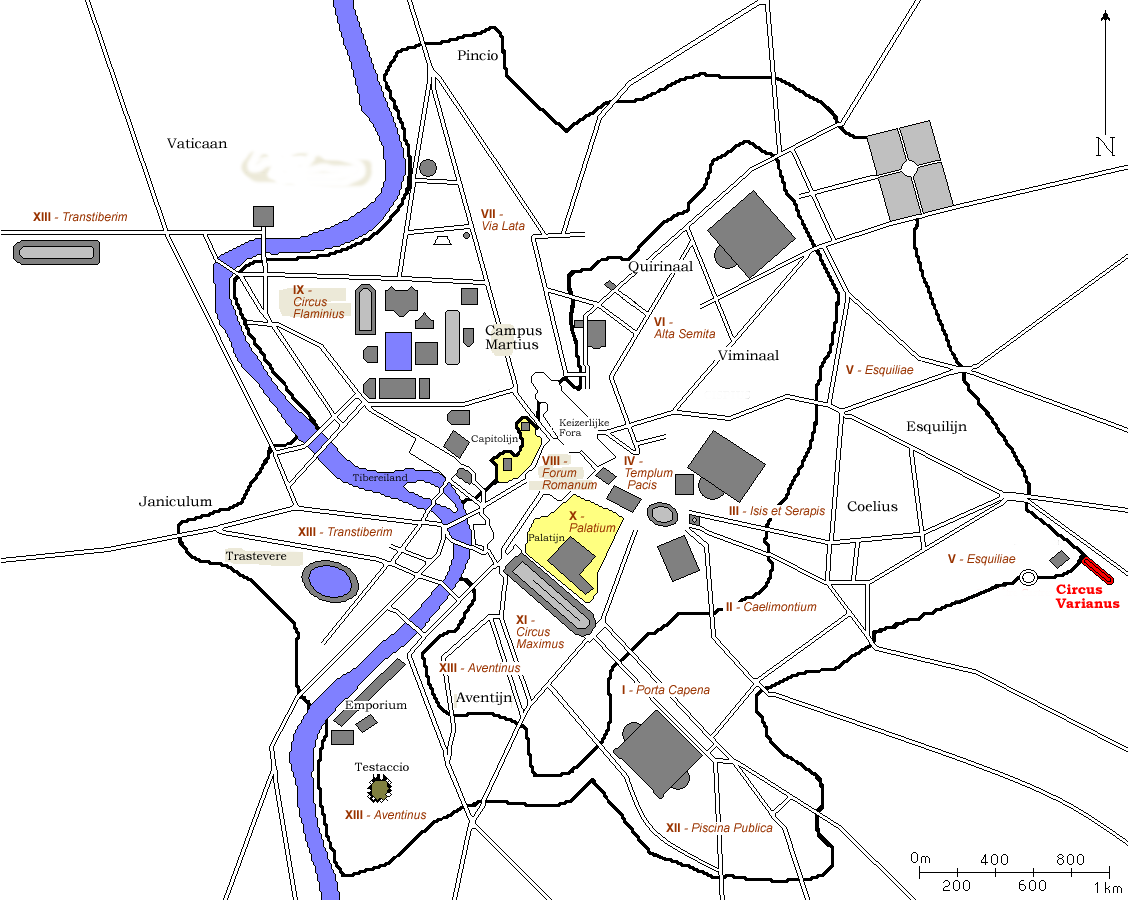Circus Varianus on:
[Wikipedia]
[Google]
[Amazon]
 Circus Varianus was a
Circus Varianus was a
 Circus Varianus was a
Circus Varianus was a Roman
Roman or Romans most often refers to:
*Rome, the capital city of Italy
*Ancient Rome, Roman civilization from 8th century BC to 5th century AD
*Roman people, the people of ancient Rome
*'' Epistle to the Romans'', shortened to ''Romans'', a lette ...
circus
A circus is a company of performers who put on diverse entertainment shows that may include clowns, acrobats, trained animals, trapeze acts, musicians, dancers, hoopers, tightrope walkers, jugglers, magicians, ventriloquists, and unicyclis ...
, possibly started during the reign of Caracalla
Marcus Aurelius Antoninus (born Lucius Septimius Bassianus, 4 April 188 – 8 April 217), better known by his nickname "Caracalla" () was Roman emperor from 198 to 217. He was a member of the Severan dynasty, the elder son of Emperor S ...
, residing in the palatial villa complex known as the Sessorium, beside the Amphitheatrum Castrense. This circus has been identified as the space in which Elagabalus
Marcus Aurelius Antoninus (born Sextus Varius Avitus Bassianus, 204 – 11/12 March 222), better known by his nickname "Elagabalus" (, ), was Roman emperor from 218 to 222, while he was still a teenager. His short reign was conspicuous for s ...
raced horses under the family name of Varius, lending the site the name of "Circus Varianus." The remnants of the circus survive to the south of Porta Maggiore
The Porta Maggiore ("Larger Gate"), or Porta Prenestina, is one of the eastern gates in the ancient but well-preserved 3rd-century Aurelian Walls of Rome. Through the gate ran two ancient roads: the Via Praenestina and the Via Labicana. The Via ...
, next to the Aurelian Wall, near the church of Santa Croce in Gerusalemme
The Basilica of the Holy Cross in Jerusalem or Basilica di Santa Croce in Gerusalemme, ( la, Basilica Sanctae Crucis in Hierusalem) is a Catholic Minor basilica and titular church in rione Esquilino, Rome, Italy. It is one of the Seven Pilgrim ...
. The dimensions of the circus measure 565 x 125 meters, just slightly smaller than the Circus Maximus
The Circus Maximus (Latin for "largest circus"; Italian: ''Circo Massimo'') is an ancient Roman chariot-racing stadium and mass entertainment venue in Rome, Italy. In the valley between the Aventine and Palatine hills, it was the first and l ...
(600 x 150 m).
According to records in the 16th century, an obelisk was found at the site, measuring 9.25 meters tall. It had originally been located at the temple dedicated to Antinous at Antinoöpolis and was moved in the reign of Elagabalus. After being discovered, the obelisk was moved to the Palazzo Barberini
The Palazzo Barberini ( en, Barberini Palace) is a 17th-century palace in Rome, facing the Piazza Barberini in Rione Trevi. Today, it houses the Galleria Nazionale d'Arte Antica, the main national collection of older paintings in Rome.
History
...
in 1633,Richardson, pg. 272 from there to the Vatican
Vatican may refer to:
Vatican City, the city-state ruled by the pope in Rome, including St. Peter's Basilica, Sistine Chapel, Vatican Museum
The Holy See
* The Holy See, the governing body of the Catholic Church and sovereign entity recognized ...
in 1769, and reached Monte Pincio in 1822 where it resides currently.
See also
* List of ancient monuments in RomeReferences
{{coord, 41.8878, N, 12.5194, E, source:wikidata, display=title Ancient Roman circuses in Rome